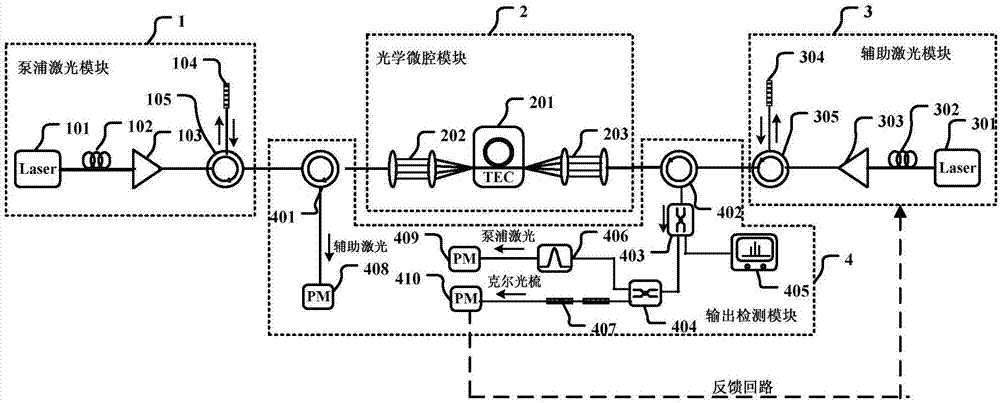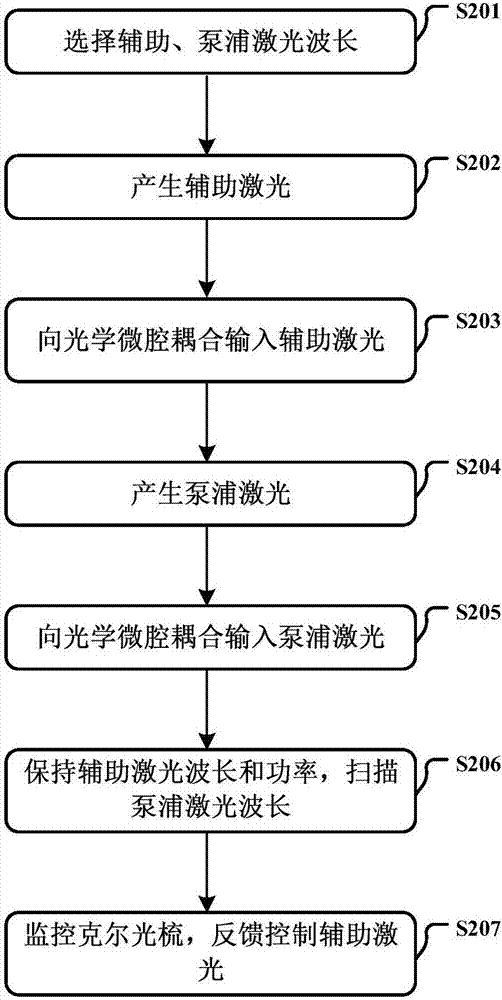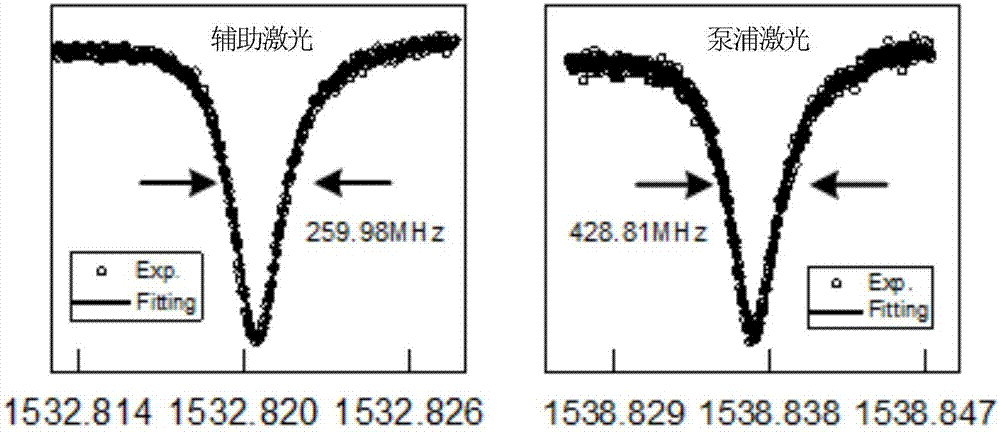Microcavity thermal effect compensation method in Kerr optical frequency comb soliton mode locking process
A compensation method and technology for thermal effects, applied in the field of optical communication, can solve the problems of being susceptible to disturbance, poor reliability, and strong randomness, and achieve the effects of avoiding strong randomness, improving stability, and simplifying the process of soliton mode locking.
- Summary
- Abstract
- Description
- Claims
- Application Information
AI Technical Summary
Problems solved by technology
Method used
Image
Examples
Embodiment Construction
[0025] Specific embodiments of the present invention will be described below in conjunction with the accompanying drawings, so that those skilled in the art can better understand the present invention. It should be noted that in the following description, when detailed descriptions of known functions and designs may dilute the main content of the present invention, these descriptions will be omitted here.
[0026] figure 1 It is a structural schematic diagram of a specific embodiment of the optical microcavity Kerr optical comb generation device of the present invention.
[0027] In this example, if figure 1 As shown, the optical microcavity Kerr optical comb generating device includes a pump laser module 1 , an optical microcavity module 2 , an auxiliary laser module 3 and an output detection module 4 . In this embodiment, the pump laser module 1 and the auxiliary laser module 3 have the same structure, including tunable lasers 101, 301, polarization controllers (PC) 102, 3...
PUM
 Login to View More
Login to View More Abstract
Description
Claims
Application Information
 Login to View More
Login to View More - R&D
- Intellectual Property
- Life Sciences
- Materials
- Tech Scout
- Unparalleled Data Quality
- Higher Quality Content
- 60% Fewer Hallucinations
Browse by: Latest US Patents, China's latest patents, Technical Efficacy Thesaurus, Application Domain, Technology Topic, Popular Technical Reports.
© 2025 PatSnap. All rights reserved.Legal|Privacy policy|Modern Slavery Act Transparency Statement|Sitemap|About US| Contact US: help@patsnap.com



